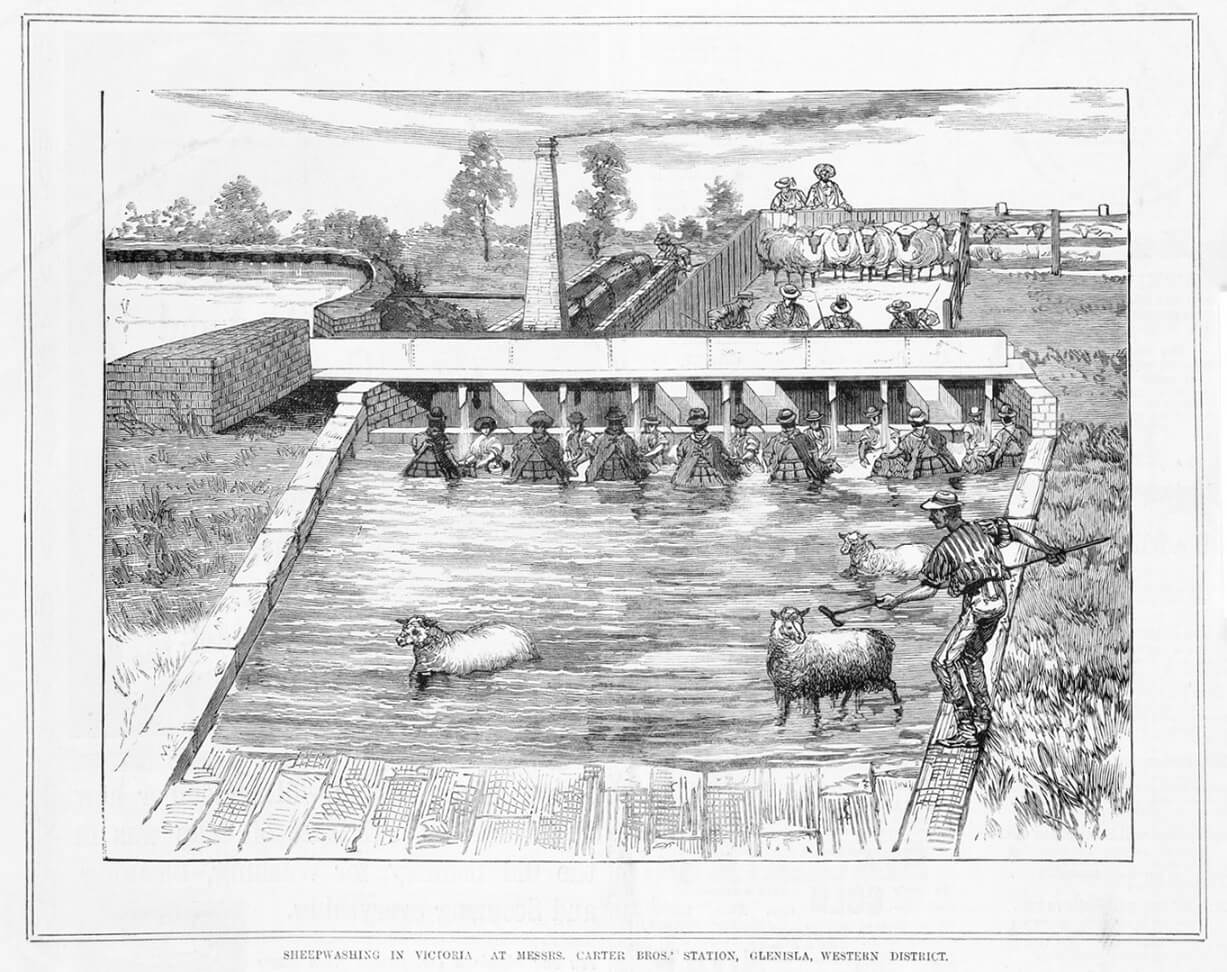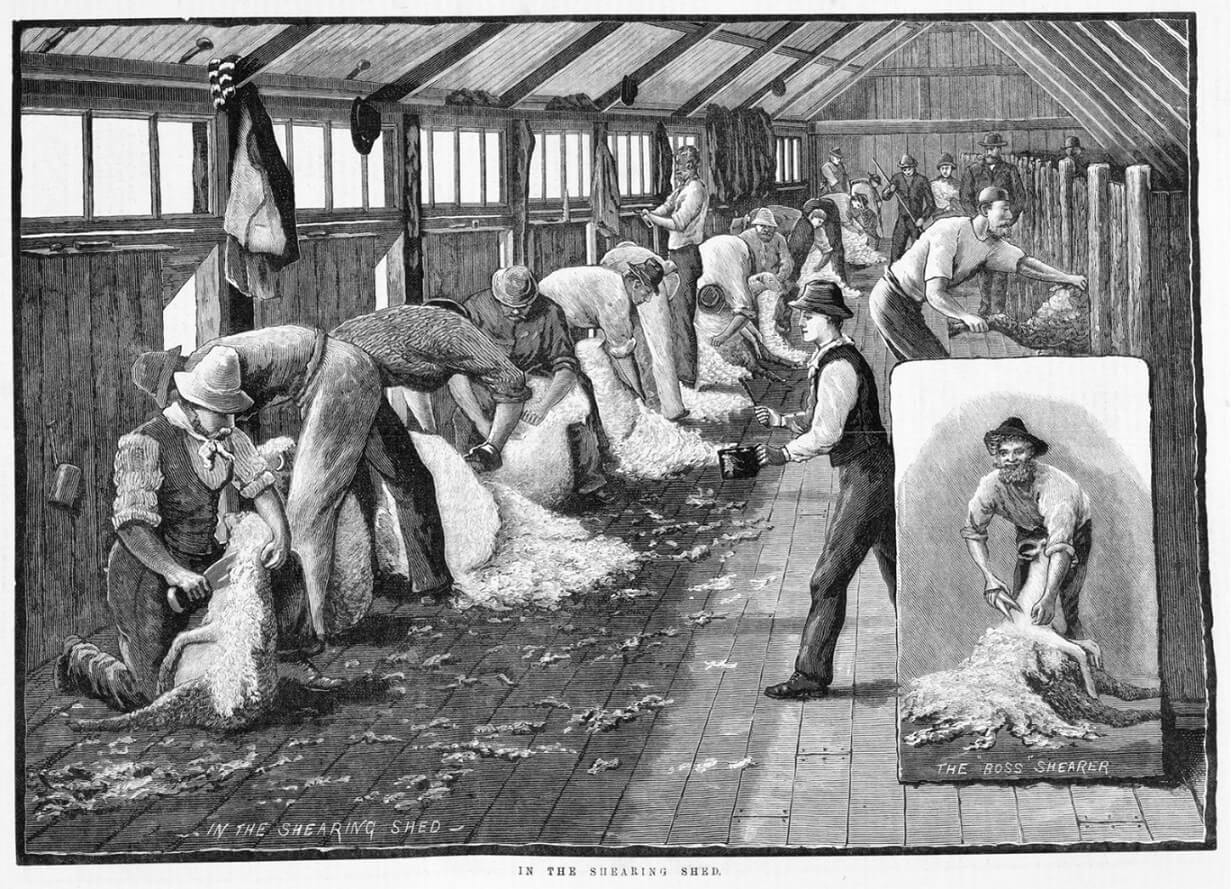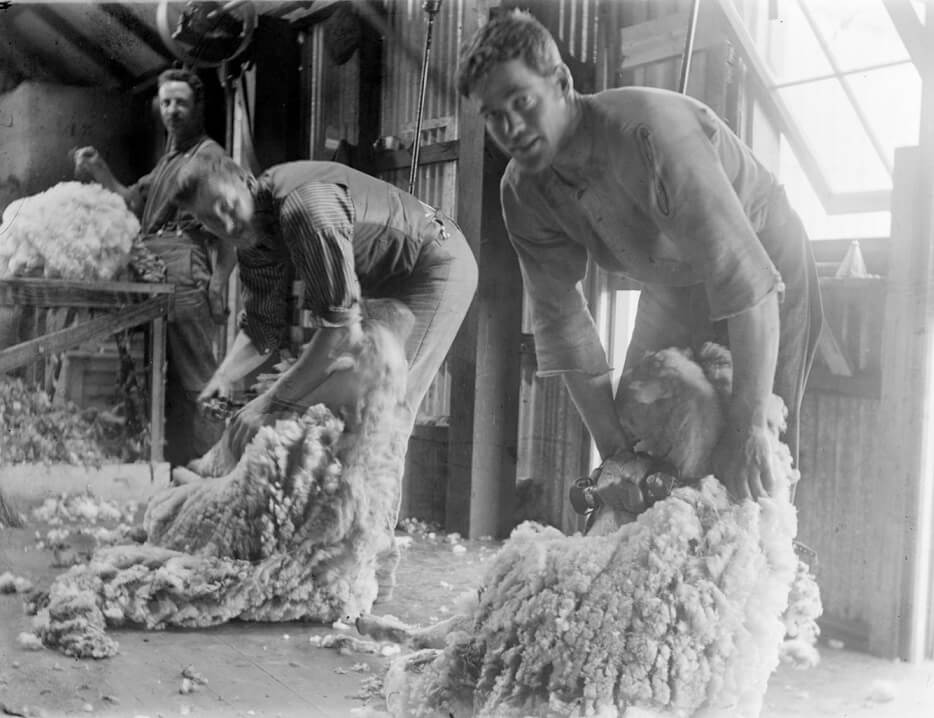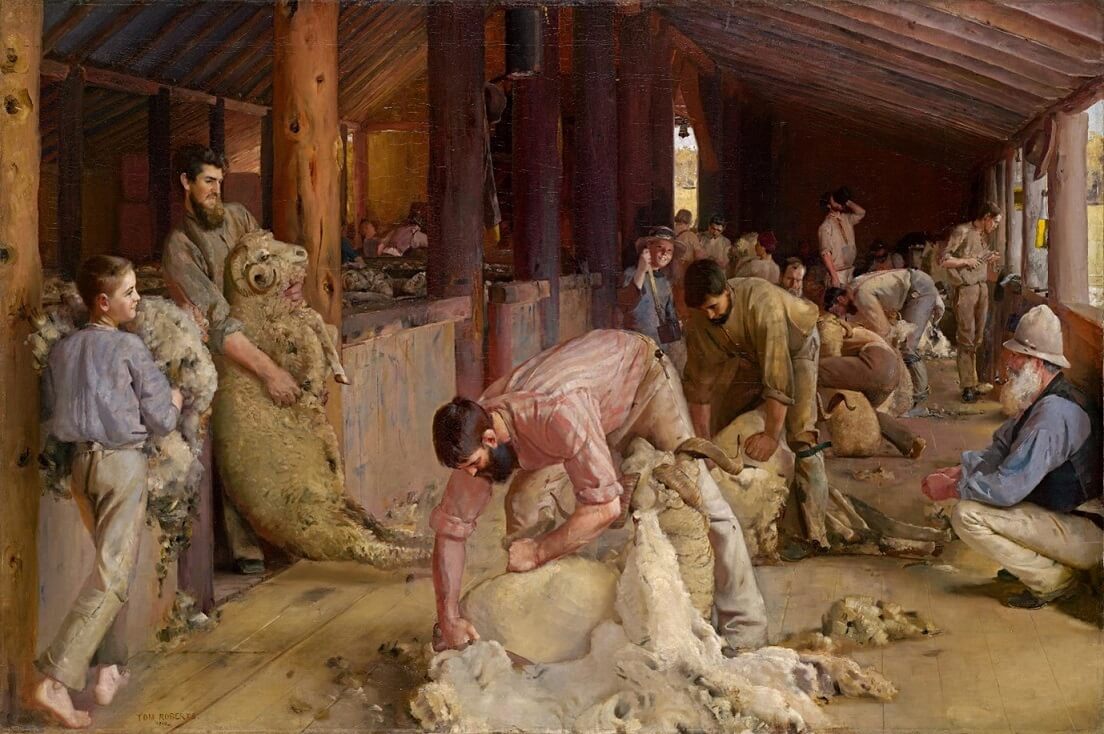At first the profits from wool were limited. Shearing was laborious, cartage to export slow and expensive and until the mid-1840s the wool bales had to be shipped to London for auction. Labour was also expensive until the depression of the early 1840s cut wages in half. Pastoral wages fell to £20 per year, but the price of sheep fell drastically too. Some pastoralists had to resort to boiling down their sheep for tallow (fat) and even so many lost their runs. Shepherds and other pastoral workers lost their jobs and were forced to wander the back country in search of work. Ironically, the 1840s depression stimulated the development of a local tallow industry. Tallow was used to make other products like soap, candles and as a base for various salves (ointments). The best quality fat was used for cooking. In the early 1840s the number of tallow works in the colony increased substantially and exports of tallow grew from about 436,000 pounds in 1842, to 962,000 pounds in 1844.
With the discovery of gold in Victoria in 1851 the pendulum swung back in favour of rural workers. Labour was scarce, as workers joined others at the gold fields. Those who remained could command high wages. But the price of wool and sheep rose too, buoyed by strong demand in both local and global markets, and the value of wool exports expanded during the 1850s. Pastoralists were able to begin purchasing some land, and introducing improvements like fencing. In 1861 Victoria exported £2 million of wool — far less than gold, but still more than before. From the mid-1870s wool again replaced gold as the main source of export income, although the value of the wool clip fluctuated over the decade, in response to drought and poor seasons. Sheep numbers fluctuated too but rose from about 6 million in 1861 to nearly 12 million in 1875, before falling to about 10 million in 1879. New South Wales overtook Victoria in wool production during the 1880s.
Sheep Washing in Victoria at Messrs. Carter Bros’ Station, Glenisla, Western District
Wood engraving, Australasian Sketcher, 28 July 1884
Reproduced courtesy State Library Victoria
Washing the sheep to rid the wool of some accumulated dirt was important before shearing. Sometimes this might be done simply by driving the flock through a creek, but this seems to be a structure built for this express purpose. It was a process requiring a substantial workforce.
In the closing decades of the nineteenth century the pastoral industry was beset by problems on several fronts. Pastoral runs had virtually exhausted the available land in Victoria, especially as pastoralists faced increasing competition from small selectors, demanding an end to vast pastoral leases. Intermittent drought affected all of agriculture, while two introduced pests ravaged flocks and pasture. Foxes were introduced to Victoria in the 1870s and soon became a pest, but it was the successful introduction of rabbits by James and Thomas Austin on their Barwon Park property near Geelong in about 1860 that had the greatest impact on the Australian environment. The rabbits moved swiftly from Barwon Park into neighbouring properties and thence throughout Australia, spreading at the rate of 70 to 100 kilometres per year. They caused an environmental disaster of astronomical proportions, and it would be the 1950s before eradication methods began to be effective. In the meantime they spawned another rural industry — the trapping or shooting of rabbits for their meat and skins.
Shearers and other itinerant workers
In the Shearing Shed, Wood engraving, Illustrated Australian News, 28 November 1883
Reproduced courtesy State Library Victoria
In addition to the workers employed year-round on properties, pastoralists hired seasonal workers to perform some tasks. These included building dams and fences, grubbing thistles, droving and shearing. Shearers in particular often worked in gangs and negotiated payment directly with the pastoralist. In the 1880s the rate for shearing in Victoria was between 12 and 14 shillings per hundred, much lower than the going rate in New South Wales, but Victorian pastoralists had the advantage that many small selectors and their sons were willing to shear in nearby sheds to supplement farm income, driving wages down. It caused considerable resentment however, especially as pastoralists were inclined to refuse payment for any sheep that were ‘pinked’ (cut) by the blade shears.
Shearing was (indeed still is) back-breaking work. For most of the nineteenth century shearers used blade shears, clipping the fleece with a scissor action. It required great skill and considerable strength in the hand, arm and back. 1880s shearing sheds provided no safety equipment, and many shearers were forced out of the industry with hand and back injuries. In the mid-1880s a powerful shearing union began to represent shearers for the first time. W.G. Spence, who had run the Amalgamated Miners’ Association with great success, became chairman of the Creswick Shearers’ Union in 1886 and soon negotiated the merger of several other small unions into the Amalgamated Shearers’ Union. Within months they had enrolled 9,000 members. The union promptly demanded a rate of 15 shillings per hundred sheep, to the outrage of some pastoralists, who formed the Western District Sheep Farmers’ Association in response. Clashes broke out at some sheds, several resulting in police charges. In 1890 the Shearers’ Union joined the maritime and coal workers’ strike but was defeated by the deepening economic depression. Most shearers were forced back to work on the pastoralists’ terms. In the meantime, pastoralists began to make increasing use of new mechanised shearing combs, which required less skill, less effort and clipped the fleece more closely, resulting in a heavier fleece. The advantage to the shearer was less stress on the hand. They remained in use until a wider comb, the so-called ‘wide-comb’ device, was introduced from New Zealand in the late-1960s, initially in Western Australia. The Australian Workers’ Union, by then representing shearers, opposed the introduction of the wide comb, and initiated a 10-week national strike in 1983. The union was defeated when the Australian Conciliation and Arbitration Commission ruled to allow the use of the wide combs.
Shearing, Lake Bolac, c. 1910-20
Glass plate negative, Hugh Michael O’Rorke photographer
Reproduced courtesy State Library Victoria
Shearers using mechanised combs. Fewer shearers were required with the introduction of mechanised shears.
Shearing the rams, Tom Roberts, oil on canvas, 1890
Reproduced courtesy National Gallery of Victoria
Painting Australia
In the closing decades of the nineteenth century local artists showed increasing interest in capturing scenes that expressed a sense of national identity. The economic importance of the wool industry, and a romantic attachment to life on the land, combined to make scenes of rural life and work appealing subjects. In this famous picture artist Tom Roberts captured shearers at work in a back-country shed. In what is often interpreted as a celebration of Australian masculinity, they are shown shearing the rams — the most arduous and difficult task for shearers. The workers all look cheerful, with no hint in this picture of the bitter industrial dispute then dividing the country. Rouseabouts are shown in the background, throwing and sorting the fleeces, while what initially appear to be two boys can also be seen. The first is shown in the foreground carrying a shorn fleece, while the second is placed in the background holding the tar pot, used by shearers to seal any cuts made on the animals by the blade shears. Many years later it emerged that the child in the background was in fact a little girl, nine-year-old Suzie Davis, who did indeed have the job of holding the tar pot in this shed at the time of Roberts’ visit, and who lived on Brocklesby Station near Corowa all her life. Her cheeky grin reaches out to us from the canvas, perhaps insisting that girls could work in shearing sheds too, albeit dressed as boys to do so! Shearing the rams is one of the most popular pictures in the National Gallery of Victoria’s collection and is seen as an iconic Australian painting.
Women in the sheds
In working in the shearing shed at Brocklesby, Suzie Davis was a decided anomaly. Women were notoriously un-welcome in shearing sheds, (unless it was the farmer’s wife delivering the food for smoko,) perhaps because their presence was thought to constrain the hard-swearing shearers. As late as 1951 a large group of shearers asked the Australian Workers’ Union to ban women from being employed as shearing cooks, arguing that they were depriving men of work and were ‘upsetting to the men’. (Argus, 29 December 1951) A compromise position was struck, which excluded women with shearing husbands or de facto husbands, but allowed widowed or single women supporting families to become shearers’ cooks. (Age, 26 January 1952). As in other industries, there were some changes during the Second World War, as manpower shortages created opportunities for women to enter jobs on the land previously barred to them. One such occupation was wool classing, although in one hearing before the Women’s Employment Board employers argued that women classers would only be tasked with ‘skirting’ and ‘piece-picking’, before passing the full fleeces on to the (male) classer. Their wages were set at 60 per cent of the male rate, during a probationary period, then 80 per cent, once qualified. (Argus, 11 September 1942) However gendered assumptions have changed in recent decades, with women joining men on the boards. As the number of shearers working in Australia has fallen to record low levels, the industry has begun to welcome women.




